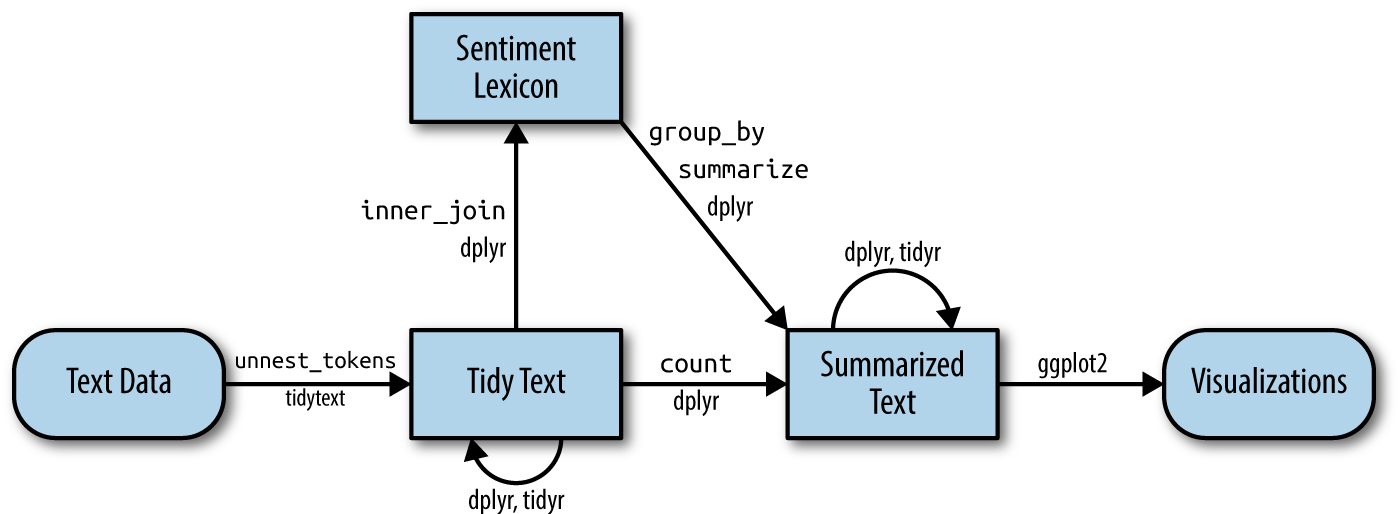Chapter 2. Sentiment Analysis with Tidy Data
In the previous chapter, we explored in depth what we mean by the tidy text format and showed how this format can be used to approach questions about word frequency. This allowed us to analyze which words are used most frequently in documents and to compare documents, but now let’s investigate a different topic. Let’s address the topic of opinion mining or sentiment analysis. When human readers approach a text, we use our understanding of the emotional intent of words to infer whether a section of text is positive or negative, or perhaps characterized by some other more nuanced emotion like surprise or disgust. We can use the tools of text mining to approach the emotional content of text programmatically, as shown in Figure 2-1.

Figure 2-1. A flowchart of a typical text analysis that uses tidytext for sentiment analysis. This chapter shows how to implement sentiment analysis using tidy data principles.
One way to analyze the sentiment of a text is to consider the text as a combination of its individual words, and the sentiment content of the whole text as the sum of the sentiment content of the individual words. This isn’t the only way to approach sentiment analysis, but it is an often-used approach, and an approach that naturally takes advantage of the tidy tool ecosystem.
The sentiments Dataset
As discussed above, there are a variety ...
Get Text Mining with R now with the O’Reilly learning platform.
O’Reilly members experience books, live events, courses curated by job role, and more from O’Reilly and nearly 200 top publishers.

